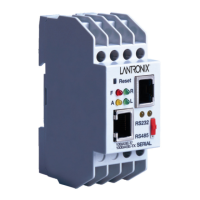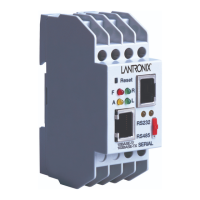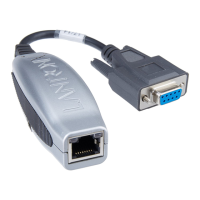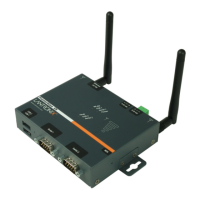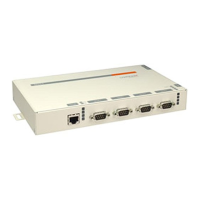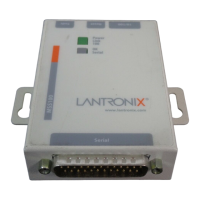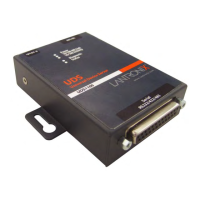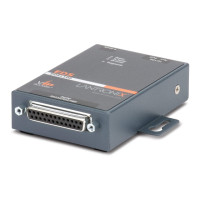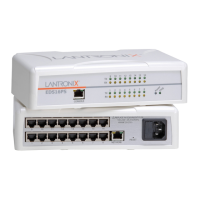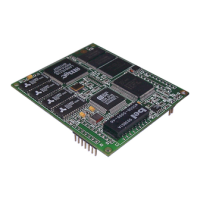IP Addresses
11.4 Network Address
A host address with all host bits set to 0 addresses the network as a whole (for example, in
routing entries).
192.168.0.0
11.5 Broadcast Address
A host address with all host bits set to 1 is the broadcast address, meaning for “for every
station.”
192.168.0.255
Network and broadcast addresses must not be used as a host address; for example,
192.168.0.0 identifies the entire network, and 192.168.0.255 identifies the broadcast
address.
11.6 IP Subnet Mask
An IP subnet mask divides IP address differently than the standards defined by the classes
A, B, and C. An IP subnet mask defines the number of bits to be taken from the IP address
as the network or host sections. The Device Server prompts for the number of host bits to be
entered and then calculates the netmask, which is displayed in standard decimal-dot
notation (for example, 255.255.255.0) when saved parameters are displayed.
Table 38 - Standard IP Network Netmasks
Network Class Network Bits Host Bits Netmask
A 8 24 255.0.0.0
B 16 16 255.255.0.0
C 24 8 255.255.255.0
Table 39 - Netmask Examples
Netmask Host Bits
255.255.255.252 2
255.255.255.240 4
255.255.255.224 5
255.255.255.192 6
255.255.255.0 8
255.255.254.0 9
255.255.252.0 10
255.255.248.0 11
... ...
255.128.0.0 23
255.0.0.0 24
255.255.255.248 3
255.255.255.128 7
11.7 Private IP Networks and the Internet
If your network is not and will not be connected to the Internet, you may use any IP address.
If your network is connected or will be connected to the Internet, or if you intend to operate
the Device Server on an intranet, you should use one of the reserved sub-networks. Consult
your network administrator with questions about IP address assignment.
11-2 XPort™ User Manual and Development Kit
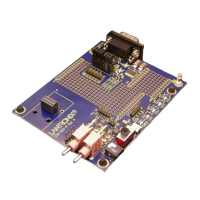
